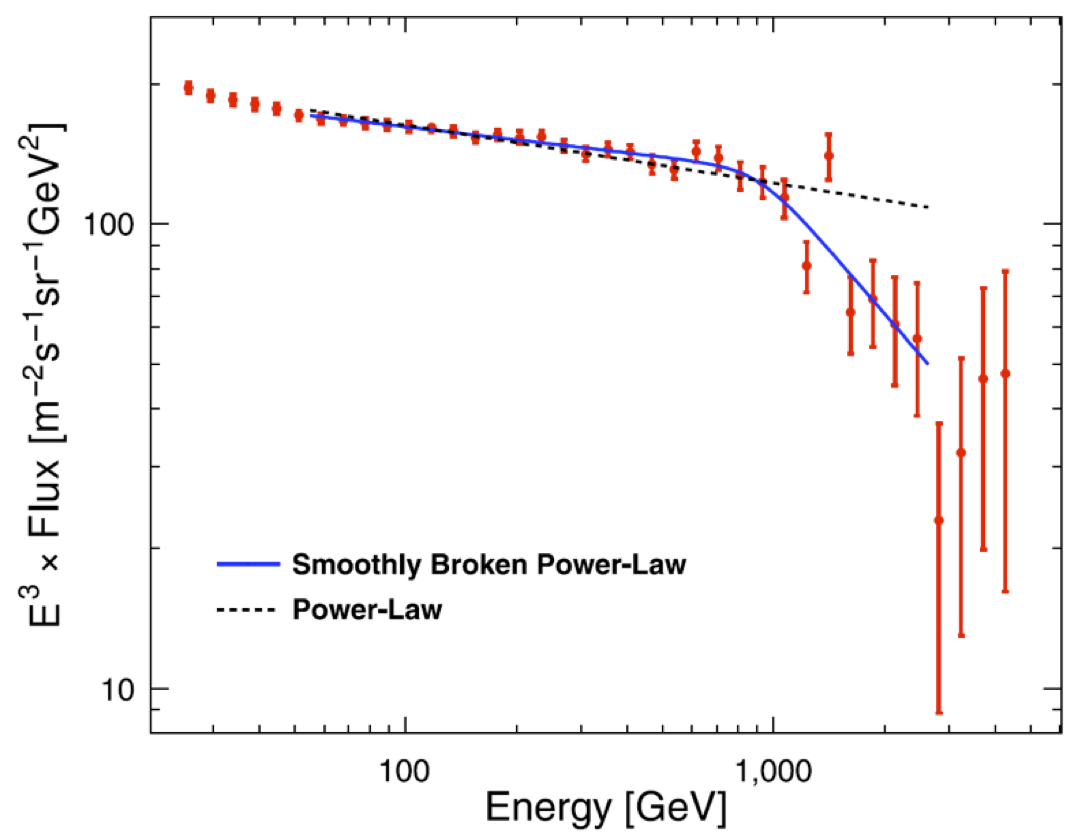Reported by SONG Jianlan

An artistic illustration of DAMPE, the DArk Matter Particle Explorer, also known as “Wukong.” (Credit: DAMPE collaboration)
Due to its contribution to the worldwide efforts to search for dark matter and explore the high-energy window of the Universe, the initial result from the mission of Dark Matter Particle Explorer (DAMPE), nicknamed “Wukong” after monkey king, the hero in the Chinese tale “A Journey to the West,” was newly listed the sixth of the 2018 “Annual Top 10 Science Advances” of China.
Physicists around the world have long been searching for the “missing mass” in the cosmos, the hypothetical matter without which many observed astronomical phenomena could not be explained using current theories. It is named “dark” because it does not give off any electromagnetic radiation and hence cannot be “seen” by conventional astronomical instruments.
Many theories have been proposed to predict the properties and derivative behaviors of this invisible matter, and among the prevailing ones is the “weakly interacting massive particle” (WIMP) model, which describes this elusive existence as a type of unusual particles that only interact with each other through gravity and some undefined forms of interactions as weak as or even weaker than the canonical weak nuclear force. This low-tone and quiet nature makes it very hard to detect, if it does exist; so far, no experiment has succeeded in catching its whereabouts.
According to the WIMP model, such particles might collide with each other (though very scarcely), and once this happens, they would annihilate and give off high-energy gamma-rays as well as other ordinary particles and anti-particles, like electrons and positrons. At last falling into the secular world in the form of ordinary matter, the remnants from their annihilation can be picked up by refined astronomical instruments, hence in theory human beings can catch a glimpse of their father particles indirectly.
Thus has DAMPE been built and sent into a sun-synchronous orbit, as a new international effort initiated by CAS scientists. Led by Prof. CHANG Jin from the Purple Mountain Observatory (PMO), CAS, the DAMPE international collaboration developed the detector to measure the cosmic-ray electrons and positrons (CREs) in space and scrutinize every anomaly in the spectrum, in the hope of finding the traces presumably left behind by the hypothetical particles.
In comparison with other dark matter detectors like the AMS-02 and Fermi-LAT missions, DAMPE offers a wider energy coverage, and better ability to discern TeV CREs from other much more abundant particles (mainly protons), hence producing broader and “cleaner” spectra. Particularly, it can give more details in higher energy ranges, due to its unprecedentedly high-energy resolution and low background contamination.
Based on the data from the satellite’s first 530-day observation, the consortium reported in Nature Dec 2017 their first finding: the accurate measurement of the CRE spectrum in the energy range from 25 GeV to 4.6 TeV. As analyzed by the team, the spectrum in the energy range of 55 GeV–2.63 TeV strongly prefers a smoothly broken power-law model over a single power-law model. This structure might have been the traces from some nearby and fresh signal sources, speculated by some physicists, judging from the fact that ordinary astrophysics generally predicts a power-law model.
The results immediately caught the eye of the whole physics community and evoked a wave of renewed enthusiasm about the search for dark matter. Particularly, the refined spectral structure at energies of ~0.9 TeV and beyond, including a potential sharp “spike” at around 1.4 TeV, greatly interested physicists. This spike, indicating a gather of CREs at this particular energy, together with the fast declining fluxes (the break) at around 0.9 TeV, aroused heated discussions on the nature of the astronomical events that could have given off the recorded signals. Proposed possible sources include nearby dark matter halos, among others.

The CRE spectrum measured by DAMPE in the energy range from 25 GeV to 4.6 TeV. Of note, the data in the energy range between 55 GeV and 2.63 TeV strongly prefers a broken smooth power-law model over a single power-law model. (Image by the DAMPE collaboration, from the Nature paper)

Before DAMPE, the High Energy Stereoscopic System (H.E.S.S.), a system of Imaging Atmospheric Cherenkov Telescopes (IACT), indirectly detected from the ground a vague break at energy around 1 TeV. However, the H.E.S.S. observation is subject to a large systematic error and covers a smaller energy range, which threw the indirectly observed break to uncertainty. Now the direct detection by DAMPE confirmed the former’s indirect hint with much higher precision and established the spectral break unambiguously.
More data are definitely required to explain the spectral structure between 1 and 2 TeV energies, the team cautioned, but for sure the first results from DAMPE have inspired further search for dark matter. Prof. Lars Bergstrom, Member of the Royal Swedish Academy of Sciences, confirmed that this is the first direct detection of a break at this energy range; and Prof. Marc Kamionkowski from Johns Hopkins University, USA listed this among his pick of the most exciting science advances of the year.
References
1. DAMPE collaboration, Direct Detection of a Break in the Teraelectronvolt Cosmic-Ray Spectrum of Electrons and Positrons. Nature 552, 63 (Published: November 29, 2017). doi: 10.1038/nature24475.
2. J. Chang, et al., The DArk Matter Particle Explorer Mission. Astroparticle Physics 95, 6-24 (Published: October 01, 2017). doi: 10.1016/j.astropartphys.2017.08.005.

